Self-adhesive film for doors
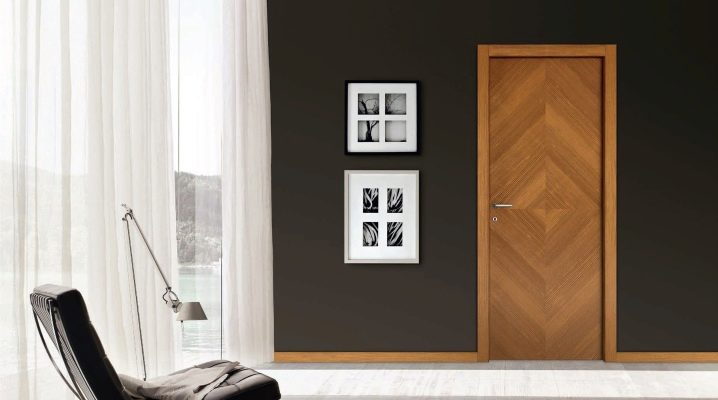
Repair is a thorough and costly business. This topic is especially relevant for doors that have lost their former attractiveness, becoming unsightly and even sloppy. Few can afford to buy and install new structures - it is troublesome and expensive. To give the doors a beautiful and fresh look, you can get by with a special self-adhesive film for the doors. This material has a wide range of applications and has many advantages.
What it is?
Self-adhesive film for doors is a multi-layer composite material consisting of four layers:
- paper or film base, differing in thickness;
- a layer of special evenly applied glue, resistant to drying;
- anti-adhesive coating of protective (temporary) paper;
- protective paper layer removed during application.
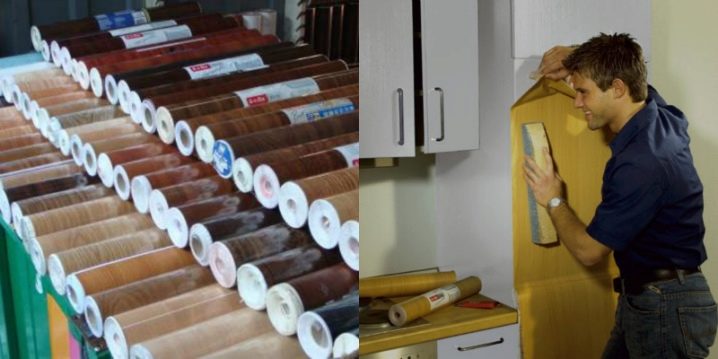
In other words, it is a familiar furniture renovation adhesive, sold in rolls up to one meter wide. It has a subtype called finish film, which is made using special types of resins.
Advantages
Self-adhesive film is an important repair tool; despite its apparent simplicity, it is an indispensable assistant and has a lot of advantages. Adhesive wallpaper on a paper or film base is deservedly one of the key finishing elements.
This material:
- can be an independent element of style or a connecting link of individual interior items;
- manufactured on special equipment using new technologies, allowing you to achieve the highest quality and practical characteristics;
- is a profitable finishing material, differing in budget cost and ease of use;
- has a rich color palette and variability of the pattern, thanks to which it allows you to update the doors taking into account the existing furniture or in contrast to it;
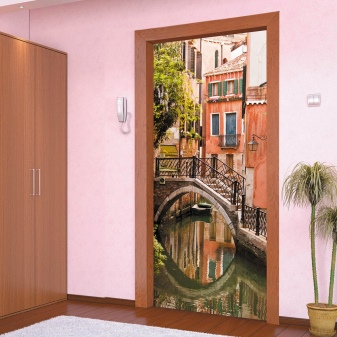
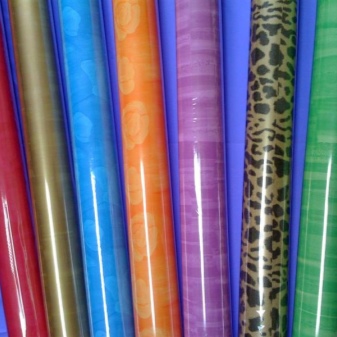
- looks stylish and expensive, sometimes resembling the texture of natural material;
- regardless of the type produced, it is suitable for any type of door surface, if necessary, covering wood, glass, metal, plastic structural elements;
- it is distinguished by excellent elasticity, which allows gluing the film not to the door leaf itself, the door sill, platbands, door frame;
- is able to radically change the visual perception of the home, varying the level of illumination of a particular room;


- is always on sale, you can buy it at any store that sells wallpaper;
- it is distinguished by a varied theme of the pattern, allowing you to successfully fit the doors into any design style, making them accents of the room, indicating the idea of the style;
- does not have a pungent chemical smell and harmful components, therefore, it is suitable for updating doors in rooms of any type (apartments, offices, warehouses, in the country or in a private house);
- can be used for compositional decoration, decorating doors and some pieces of furniture (for example, kitchen) in one design;
- has a variability of width, produced in three categories: 45, 60 and 100 cm.
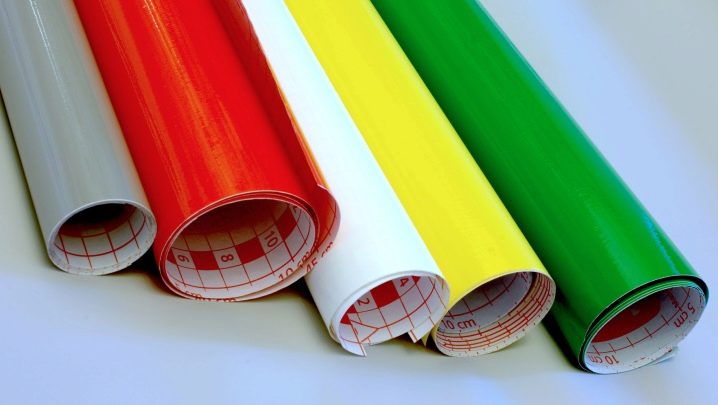
The self-adhesive film wallpaper is unique. She, in addition to updating old doors, is able to replace their painting, and the result of using the material is always at a high level. This finishing tool does not need to be dried after pasting the surface. Cloths with a film are convenient because they allow maintenance if dirt gets on the surface.
The film can be bought in whole rolls or in the form of a piece of the desired length (depending on the store-seller).
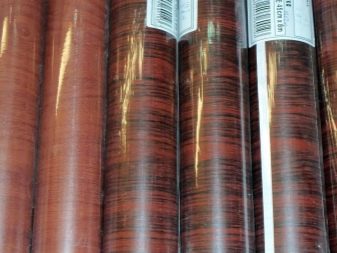
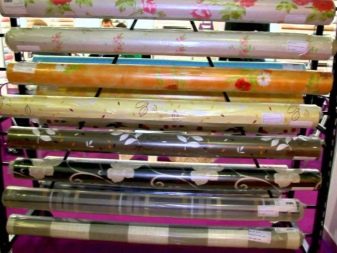
Minuses
With a lot of advantages, self-adhesive film for doors has several disadvantages.
She:
- needs surface preparation, otherwise it gives out all the imperfections, accentuating irregularities and different shades of the selected coating (it does not hold well on a plane filled with grease and dirt);
- requires a skillful approach to work and accuracy (under strong tension, it can break, stretch, deforming the pattern);
- it is not always performed with high-quality painting, therefore it may lose brightness;
- differs in lightfastness exclusively in expensive canvases;
- is selected thoroughly, otherwise it will not serve the prescribed period.
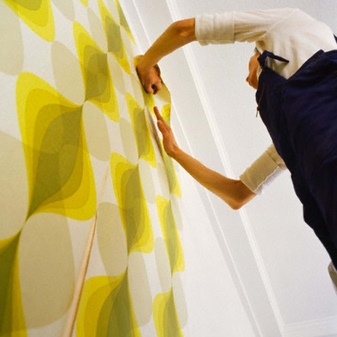
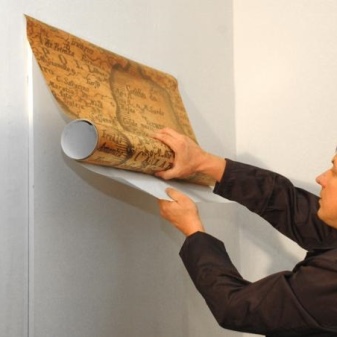
If, in the process of pasting the door plane, an uneven tension of the finish film is allowed, over time it will begin to lag behind the plane. The polymer material does not mask significant flaws in the door leaf or frame. It is impossible to glue it twice: separating it from the surface, straightening and re-gluing is ideally problematic.
The capabilities of this finishing material depend on the raw materials from which it is made. Paper options are cheaper, however, during the operation of the door, the surface of such a film does not provide for wiping or cleaning.
For practical reasons, manufacturers have to focus on the release of a line based on dense film.
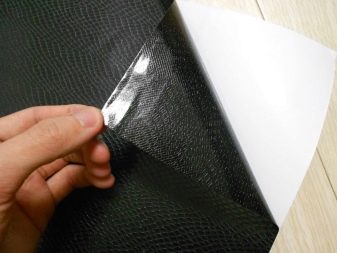

Views
Polymeric, paper or metallized material that can help out in the event of renovation of furniture in a rented apartment or budget repairs is practical in wet-type rooms with a large temperature difference. Self-adhesive decorative film for doors is durable and comes in several varieties.
It happens:
- mirrored;
- matte;
- glossy;
- transparent;
- polypropylene;
- laminated.


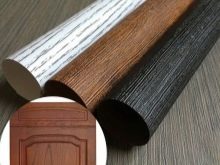

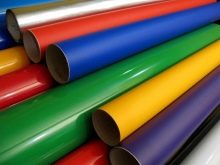

By the type of adhesive layer, the finish is divided into:
- water-based dispersion acrylate;
- analogue based on rubber.

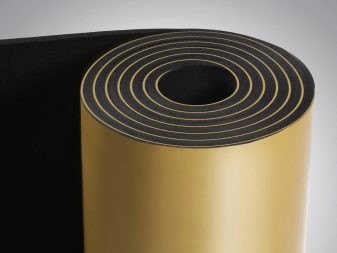
How to choose?
In order for the purchase of PVC film to be successful, and the repair to be simple, the choice of finishing material will require knowledge of certain nuances. It is important to consider the finish of the film. It happens:
- standard - with imitation of wood species, veneer, ceramics, mosaics, textiles, etc. (has a coating of a transparent or tinted plan);
- special - for the texture of the metal, the type of mirror, pile, the structure of cork, as well as varieties with an unusual effect (for drawing with markers, crayons, writing temporary notes).
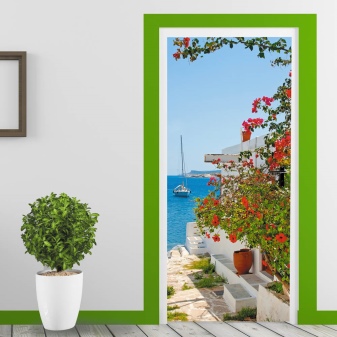

When buying, it is important to consider:
- scope and correspondence of the drawing to the chosen theme (MDF, wood grain, marble);
- compatibility of use with a specific model of doors (for sliding compartments, interior doors);
- type of premises (for a bathroom, living room, kitchen, nursery, etc.);
- type of the glued surface of the door (for plastic, glass, veneered);
- matching the picture with the theme and color of the interior design;
- the type of surface of the finishing material (glossy is easier to wipe, due to glare it adds more light to the room, matte is more difficult to maintain, but looks nobler);
- the amount of material, taking into account the percentage of scrap (there must be a minimum stock, with a shortage of material, the appearance of the door suffers) and the coincidence of the pattern.
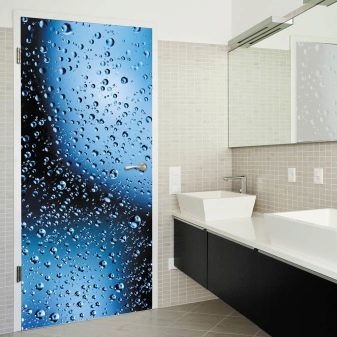
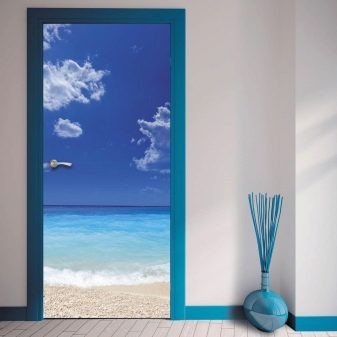
The purchase consists of two trips to the store: the first time the raw materials are looked at, then the required amount is determined at home, the second visit will allow you to look again at the selected option and buy exactly as much as you need (sometimes, after seeing the film design for the second time, it does not seem special, so later there are often disappointments).
The pre-purchase preparation process includes an overview of reviews about the quality of the product, the degree of its relevance and durability in a particular room, durability and external characteristics.
How to paste over correctly?
Before you paste over the door with a finishing film, you need to think about the design.A competent approach allows the use of materials of different colors. This approach is good primarily for professional designers, although everything is possible for a beginner if desired.
It is possible to glue doors in the form of complex combinations, taking into account the peculiarities of the interior of a particular room (for example, glue different sections of the door leaf in separate tones).
The door cladding can be mirrored, changing the color on each side. It is important to take into account all the little things, not forgetting about the racks, the box, the opening.

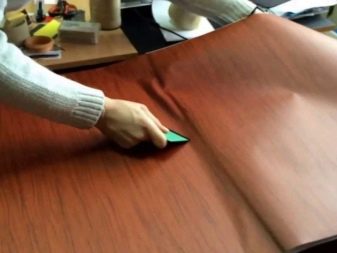
The pasting technology implies the presence of the following equipment:
- tools for marking (tape measure, ruler, pencil or marker), cutting off excess canvas (scissors, stationery knife) and smoothing the film (rubber spatula);
- materials for adjusting the position of the finish (water, spray gun) and work with corner elements (hair dryer);
- tools for surface preparation (sandpaper, primer, mastic).
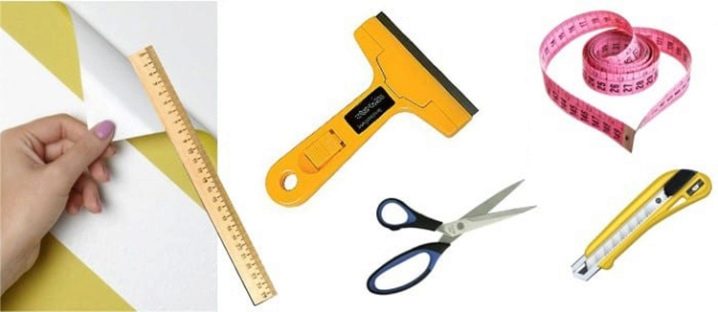
The instruction for pasting doors with a self-adhesive finishing film consists of several stages:
- Surface preparation: it is cleaned of irregularities, burrs, roughness (especially important for wood doors). In models with a painted surface, paint drips and areas of "risk" where the paint leaves the plane are removed. If the plane of the wood panel has a glossy texture, it will be easier to glue on it.
- Primers for the prepared surface: the technique allows you to achieve maximum adhesion of the film to the glued surface.
- Marking the polymer material in compliance with the pattern and trimming the excess web: the measurements are transferred to the protective paper layer of the backing, since it will not be possible to remove them from the front side.
- Pasting. It is carried out in the direction from top to bottom. To do this, apply the upper corner, combine it with the corner of the door, determining the direction of the canvas downward with the coincidence of the direction of the line of the edge of the door. Peeling back the edge of the backing, glue the corner, and then gradually the remaining film sheet. An important nuance: you cannot completely remove the substrate, it is removed as it is glued and removed at each section of the bubbles with a rubber spatula.
It is important to do this carefully, otherwise you can ruin the film. Complete hardening occurs within a few hours.
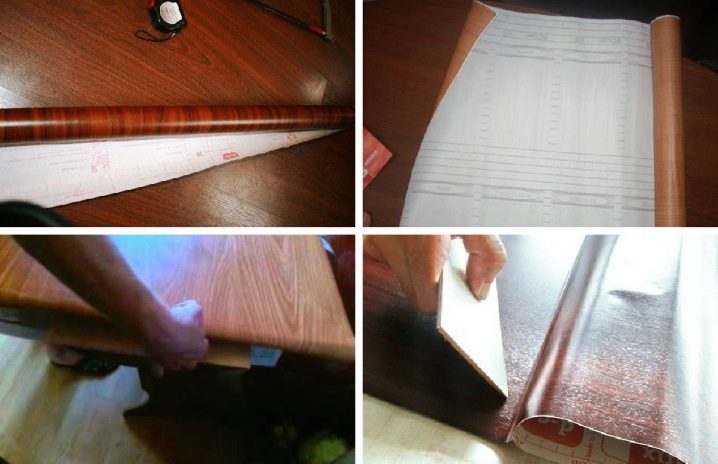
It should be borne in mind that using water does not always help, as excess moisture spoils certain types of finishing materials. It will be problematic to glue it on the second try, since you will have to expel the water. If it remains, the appearance of the finished work will suffer.
The hair dryer helps to melt the film a little so that it fits better and holds on to the surface more firmly.

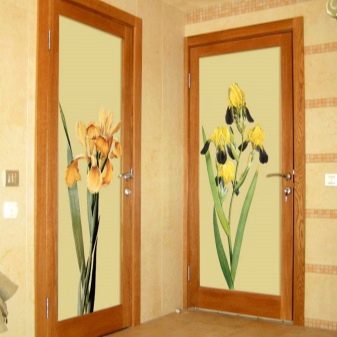
How to remove?
Knowing certain tricks, it is not difficult to remove the film from the surface if necessary. This will allow you to easily remove the old covering if you suddenly want to change the style of the room. A solvent is not always suitable to peel off the old finish, because not every drug is capable of destroying the adhesive composition. To cope with the problem, you can take note of the methods of experienced craftsmen.
For example, if the canvas is intact, it is enough to peel off a small corner with a hair dryer, then gradually remove the finish film by slowly pulling it towards you (you can use the hair dryer pointwise, heating section by section in circular movements at a distance of 10 cm from the heated surface).
You can use a special highly penetrating aerosol formulation called Decal & Label Remover. It must be sprayed under the edge of the film, removing it as the composition penetrates to the surface between the wood board and the adhesive layer. VD-40 is suitable for the same purposes.
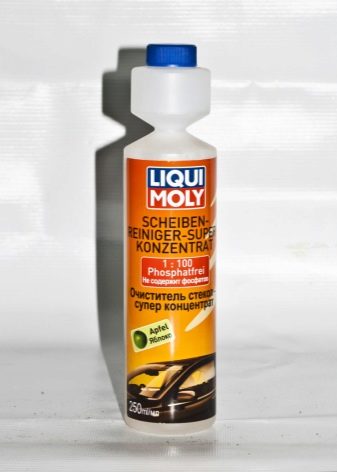
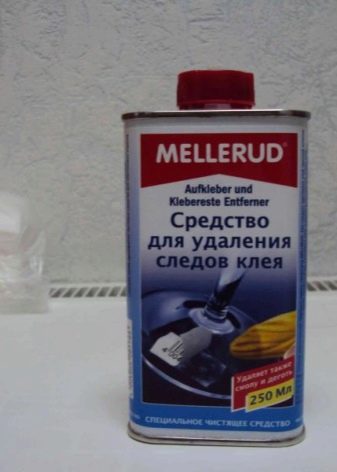
If you still have faith in a solvent, you should choose 646 or white spirit, use a soft cloth to remove the remnants of glue, applying it to the surface with its wet side and quickly wiping it dry. Do not rub the solvent: this can provoke the rubbing of glue into the door.
It is not recommended to use oily types of solvents for these purposes. Sometimes the craftsmen, in order to clean the surface of the old film, use rectified alcohol (96%), noting that neither vodka nor a medical analogue can cope with this problem.
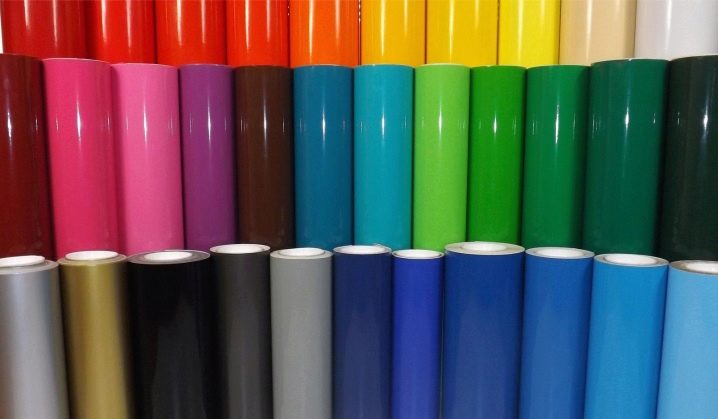
Interior options
Bringing harmony into the interior of your home is not as difficult as it might seem at first glance. To do this, you can pay attention to the ideas of professional designers, adding to them something of your own: this way the style will be masterful and unique:
- decorating the door in the style of glamor will allow you to designate the belonging of the room to the fair floor: thanks to the minimum of small details, the pattern on the door will be harmonious;
- you can restore the interior door in the spirit of the Venetian era: the stylish type of photo printing with the 3D effect looks original and advantageously plays up the imperfections of the door leaf surface;

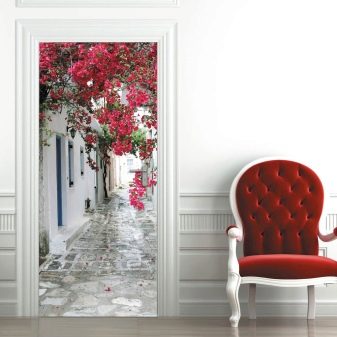
- fans of flower arrangements will like the door cladding with a film with a floral theme in the form of large iris flowers: by choosing shades to match the wall wallpaper, you can achieve a harmony of the design color type;
- art tinting of cabinet doors with a drawing from your favorite cartoon will add a special atmosphere to the room, endowing it with good and positive: drawings are harmonious with at least one shade matching the tone of the existing interior items;
- if the room is small, you can beat the door tint with small patterns on the film: a summer sketch will bring warmth into the space, and the repetition of the pattern on the furniture plane will create the effect of a compositional ensemble, which, if desired, can be supported with small rugs to match the door pattern.
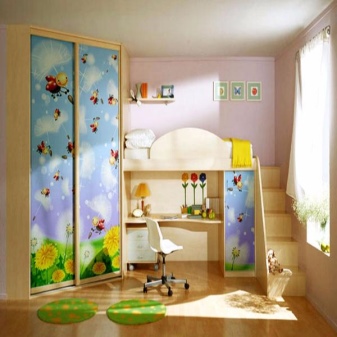
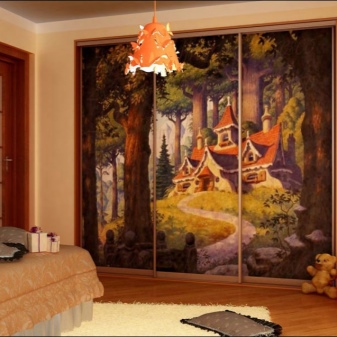
Whatever the choice, it is important to remember: the overall look should tune in to the positive, therefore, soft and muted shades of the color palette are in priority. They can be light or rich, but always positive. Ominous red, dark black, depressive dark blue are excluded.
How to stick a self-adhesive film on the door - the next video.













The comment was sent successfully.